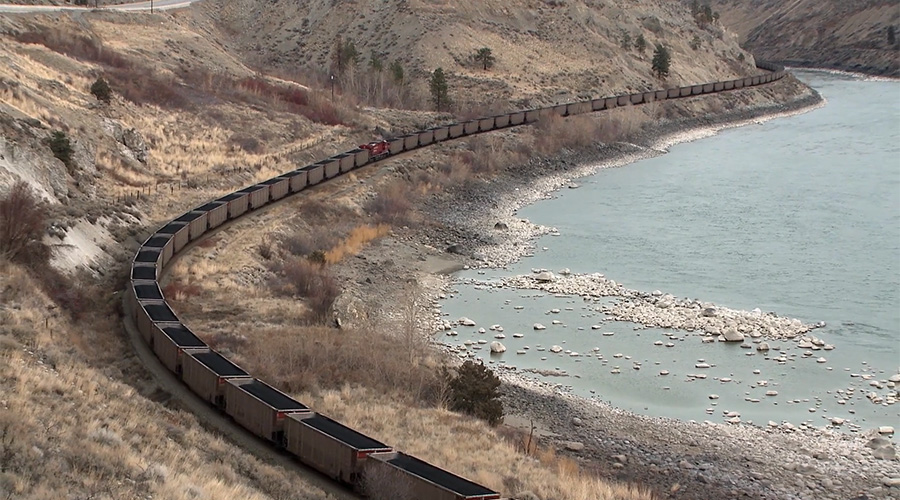Hudson at rail summit: Norfolk Southern’s mobile-first approach gets the job done faster, safer
6/4/2021
By Julie Sneider, Senior Associate Editor
Norfolk Southern Railway is using its “mobile-first” approach to technology to empower its workforce, particularly in field operations.
Although there are a lot of definitions of a mobile-first approach, to NS it means changing the way the Class I thinks about application development, according to Chris Hudson, NS’ director of information technology (IT) application development.
“Mobility is one of the huge areas of our digital-first strategy,” Hudson told attendees of Progressive Railroading’s May 26 virtual summit, “IT Advancements to Meet Organizational Strategy.”
“We want purpose-built applications; we want to empower the workforce,” Hudson said. “We want to make sure that the end-user has the information and the data to make the decisions they need in a real-time environment.”
The approach leads to a more efficient gathering of data, and improves the quality of the data and job safety, Hudson said.
His presentation detailed the NS mobile-first approach, how it’s delivering real-world value and the future of mobility through technology.
When it comes to selecting mobile devices for field operators, NS goes through a rigorous process to ensure an unbiased decision regarding what would work best for employees. One factor is portability: A tablet, for example, isn’t as helpful as a hand-held device in that the tablet tends to stay in the cab of the locomotive or truck rather than in the hands of a field operator. A mobile device’s lifecycle also is taken into account — will the device be relevant to the employee’s job in three to five years?
How the mobile-first approach delivers value
Hudson described real experiences of the T&E crew, or the locomotive engineers and conductors in the NS transportation department whose jobs rely heavily on paperwork, radio communication and reporting to a physical crew room. NS developed a mobile train reporting application, which helped improve the job duty requirements.
“Think about the things they have to carry on the job: operating rules, bulletins, job aids, reference guides — they have to keep up on all of them,” Hudson said. “We also had to remove inefficient radio communication, where they had to radio the back office to get their data so they can continue their work. In the end, that created an unempowered workforce in that they had to wait on someone else to complete their task before they could continue theirs.”
 Chris Hudson’s presentation detailed the Norfolk Southern mobile-first approach, how it’s delivering real-world value and the future of mobility through technology.
Chris Hudson’s presentation detailed the Norfolk Southern mobile-first approach, how it’s delivering real-world value and the future of mobility through technology.The next phase of developing the mobile-first approach for T&E crews focused on a digital document strategy for dynamic data such as hazmat information. Currently, NS is piloting an electronic consist application.
“We have a special permit on our Southern region, and we’re applying for the entire network to have a special permit, to create an electronic consist of hazmat information so we don’t have the physical paperwork anymore,” said Hudson. “We’ve included this feature in our mobile train reporting application. Also, we have to be able to share this with first responders, so we’ve done that, as well.”
For more static information that T&E employees must carry — like operating rules, industry reference guides and bulletins — NS purchased Comply 365, a cloud solution that enables targeted document distribution.
NS also sought to remove the T&E crews’ reliance on fixed-place reporting locations such as the crew room for end-of-shift reporting on things like train tie-up, locomotive inspection and hours of service.
“We are currently developing these mobile capabilities that not only drive us to more efficiencies, data timeliness and quality, but get us to our goal of removing these fixed-place reporting locations with shared devices,” Hudson said. “There is a safety aspect to this, too. As we’re in this pandemic, there has been a lot of concern about the safety of using shared computing devices. This [mobile technology] eliminates that concern.”
Hudson also described UTCS Lite, a mobile-first technology deployed in the NS engineering department. The mobile unified train control (UTC) system provides mobile trackline and planning windows that empower the roadway worker and improve communication with the dispatcher, Hudson said.
The app also reduces the time it takes to request track authority.
“Before, it took five minutes to get an approved authority and now with mobile track authority, it takes less than 30 seconds,” Hudson said. “We have over 40,000 track authorities a month, so there’s a huge time savings. Currently, over 75% of all track authorities are coming in through the mobile application, and we expect to be above 90% in the next few months.”
In addition, NS now has mobile apps used for Federal Railroad Administration (FRA)-required inspections of track, bridges and communications and signals. Using geospatial data, the mobile app provides locations where inspections are needed. The technology has helped improve the quality of data derived from inspections, as well as the time it takes to conduct them.
“We tell [inspectors] when and where they need to test so that we can stay in compliance with regulations,” Hudson said. “In the past, this involved a lot of paper, but now the information is in the application. Inspections can be completed at a much faster clip.”
Transportation and engineering employees aren’t the only ones benefiting from the NS mobile-first approach: Applications are being developed for locomotive and car management and maintenance systems in the mechanical department and for customer pipeline management.
As for the future of mobility? Hudson sees potential for digital “wearables” such as smart watches, through which prescriptive or proactive notifications could be sent to railroad employees as well as customers; and smart safety glasses that C&S employees, for example, could use for troubleshooting problems on the network.
The mobile-first approach goes hand-in-hand with speed to market, or getting customers’ shipments to where they need to go, said Hudson.
“We want to continue to build out these applications and get the right tool in [workers’] hands so they can do their job effectively,” Hudson said. “This gets us to our final goal, which is to provide better customer service and better customer experience.”


